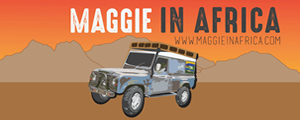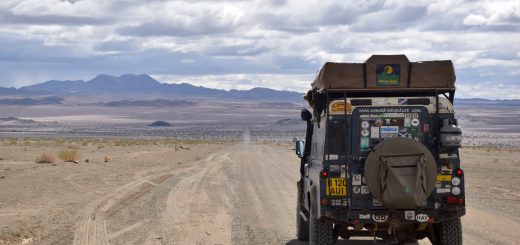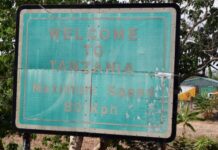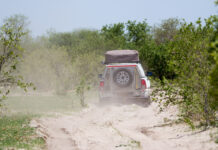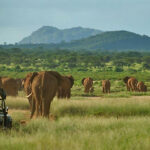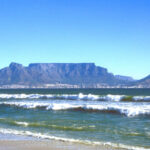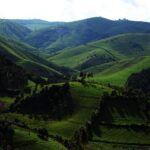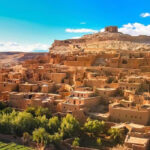Over 100 miles long and 1,800 feet deep, the Fish River Canyon is the largest in Africa and the second largest in the world (by some measures).
After we crossed the border from South Africa, we headed straight for what many had told us was Namibia’s most stunning destination. And boy, it did not disappoint!
Fish River Canyon
hells-bend-fish-river-canyon
Hells Bend, Fish River Canyon
The Fish River, which carved out the canyon 50 million years ago, is the longest interior river in Namibia. When we visited, the river wasn’t flowing, although we were told that it usually floods in the summer.
The Canyon has been known to people for an estimated 50,000 years, and was an important source of water for early humans surviving in an otherwise arid environment. At the southern end of the ravine are the Ai-Ais natural, sulphuric hot springs, named after a Khoesan word meaning ‘boiling water’.
storm-fish-river-canyon
A storm over Fish River Canyon
A storm over Fish River Canyon
A storm over Fish River Canyon
fish-river-canyon-namibia
Fish River Canyon, Namibia
Driving to Fish River Canyon
The drive to Fish River Canyon was definitely more than half the fun. It felt like driving through Mars. As you fly down the dusty dirt roads, without another car in sight, the vast, rocky landscape breaks in a line of beautiful cliffs.
road-fish-river-canyon
Road from Noordwoer to Fish River Canyon, Namibia
Even more stunning was, during our visit, there was a just storm over the Canyon, between Ai-Ais and Hobas. But the surrounding countryside was blue skies, making for stunning views!
road-to-fish-river-canyon
On the road to Fish River Canyon, Namibia
We approached from the south, which involves driving through the stunning Ai-Ais National Park. Established in 1969, the 345,000 hectare national park is linked with the Richtersveld in South Africa. It is Namibia’s first transfrontier park, formally known as the Ai-Ais Richtersveld Transfrontier Park.
entering-ais-ais-national-park
Entering the Ai-Ais National Park, near Ai-Ais Namibia
What to do in Fish River Canyon
Hike it of course!
We were more than a little disappointed to discover that you cannot hike Fish River Canyon without participating in the official, albiet self-guided, 85km-long, 5-day hike from Hobas to Ai-Ais. Permits are required, and hikers must be completely self-sufficient. Because of extreme weather, permits are only issued in the winter (May – September) and are in limited supply due to the extreme popularity of the hike.
If you’re crazy, you can also run the hiking trail in 24 hours.
fish-river-canyon-land-rover
Maggie takes in the views of Hell’s Bend, Fish River Canyon
Other than hiking, there really isn’t that much to do other than take in the impressive views. A one to two day stop over for us. The hot pools at /Ai-/Ais Hotsprings Spa made for a nice visit. The viewpoint of Hells Bend near the much more basic and affordable Hobas Rest Camp is also worth a stop (picture).
Where to camp
Before we drove to the Canyon, we camped near the border at the amazing Amanzi River Camp. The campsites overlook the beautiful Orange River. It was an amazing place to relax for a night or two, but the site also organizes multi-day canoe trips on the Orange and Fish Rivers.
orange-river-amanzi-river-camp-namibia
View of the Orange River from Amanzi River Camp, Namibia
Unfortunately we were underwhelmed by the campsite at Ai-Ais Hotsprings Spa, which simply occupies the space in front of the resort. So we opted instead for Hobas – simpler campsites set into the natural bush, with new ablutions to boot.
